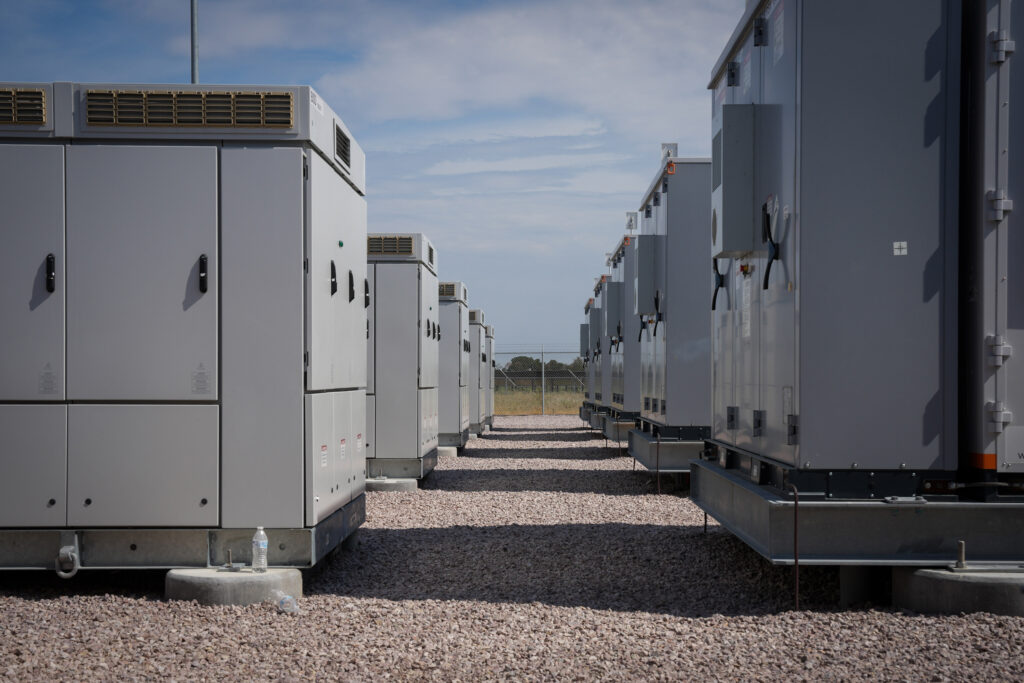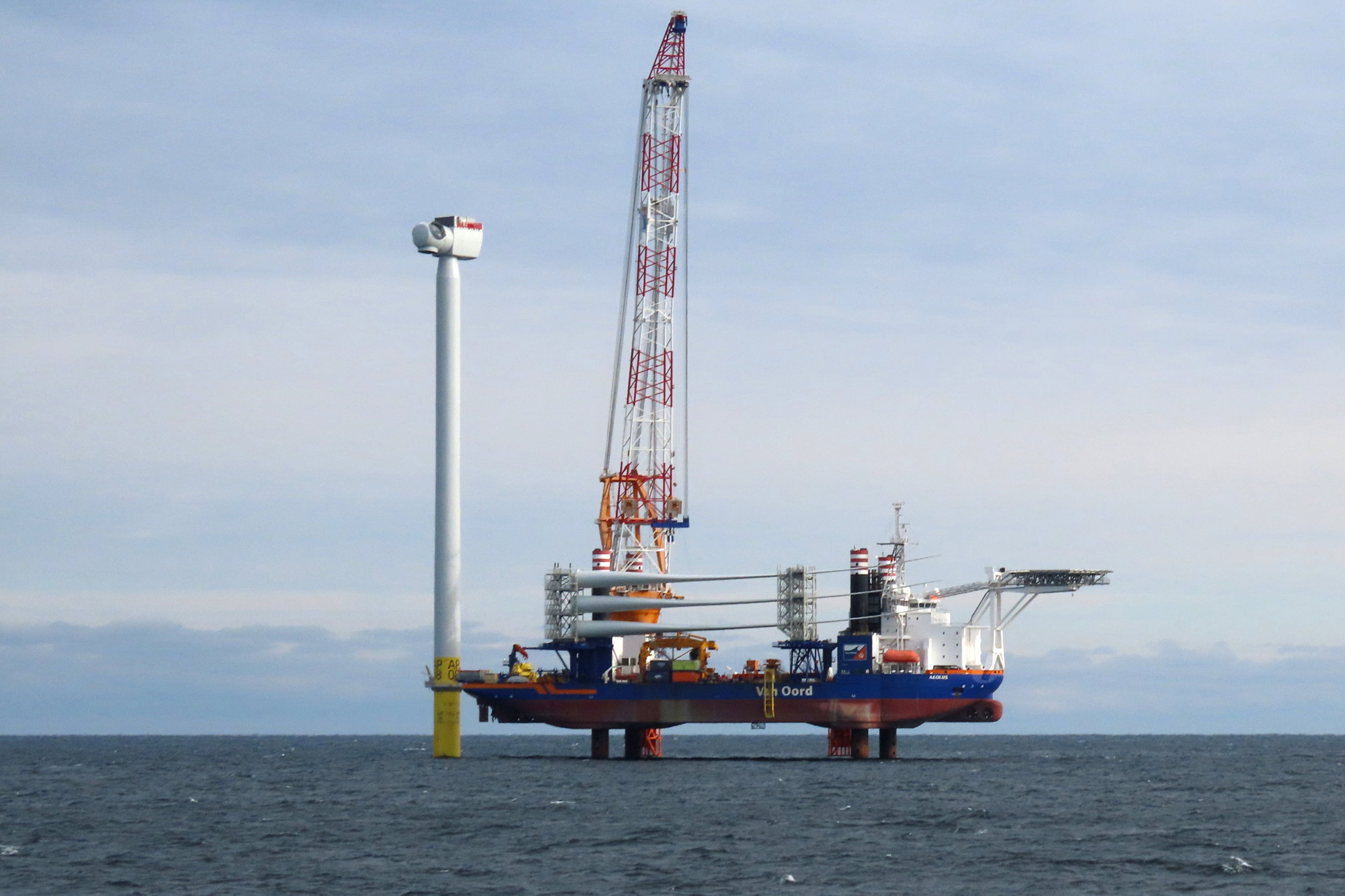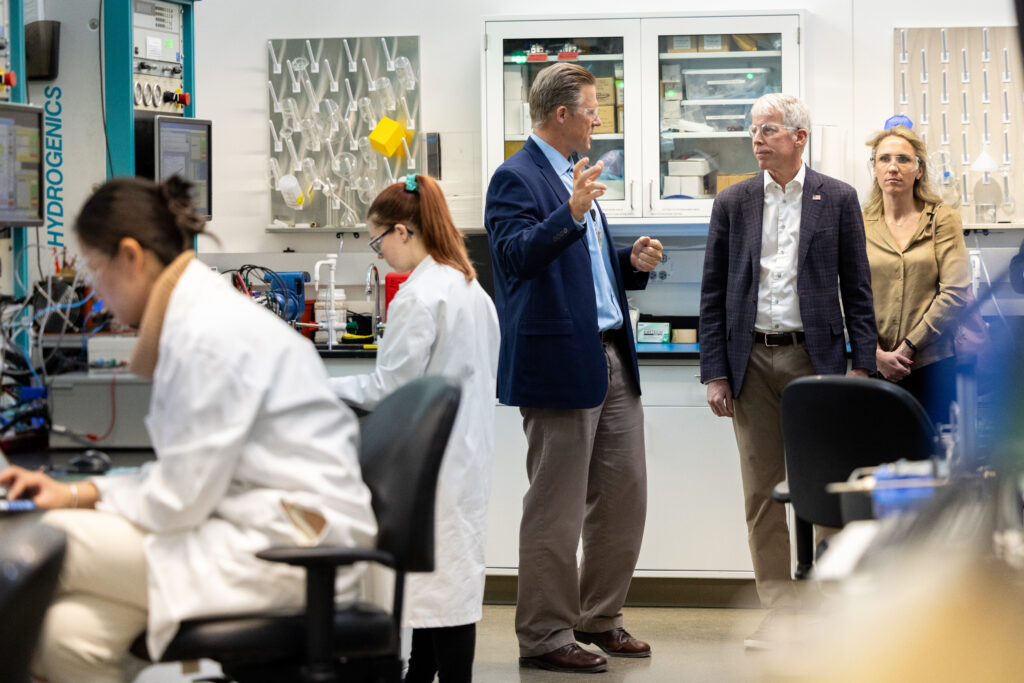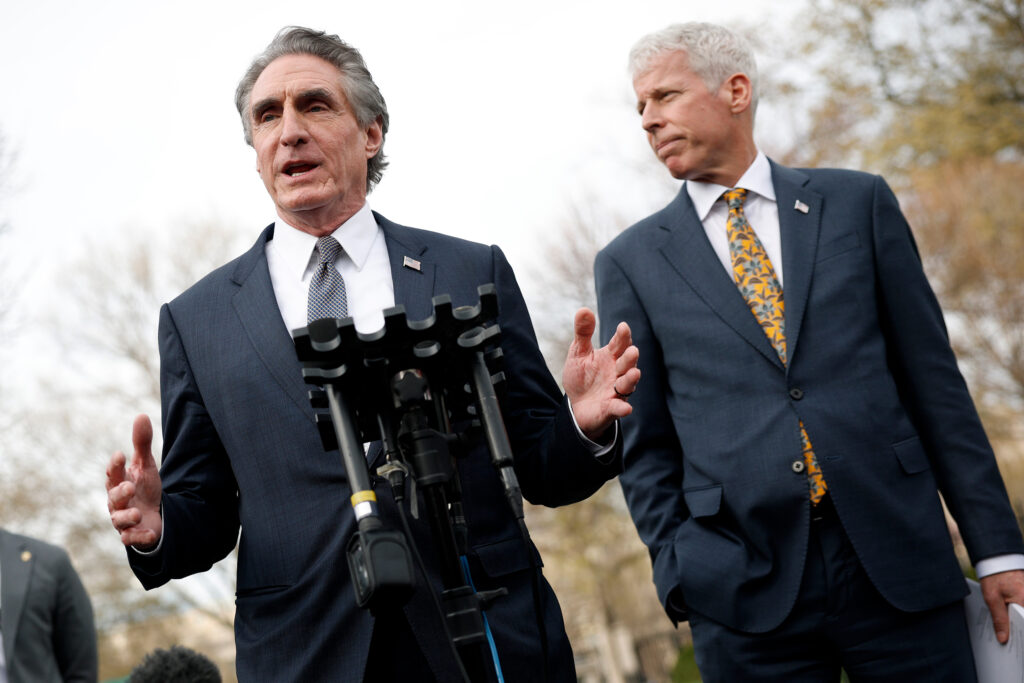PHILADELPHIA—It was an unseasonably warm spring day, and Jackie Robinson was keen to show off a machine that many climate advocates say is the cooling technology of the future.
“Welcome to my heat pump lab,” Robinson said. “Come on in.”
Robinson’s lab, buried inside a sprawling former factory in Philadelphia’s rough-and-tumble Kensington neighborhood, contains a plethora of heat pumps of various sizes and states of undress. It was opened in 2023 by the Energy Coordinating Agency (ECA), a nonprofit that trains at-risk youth and formerly incarcerated individuals for careers in heating, ventilation and air conditioning at the 58,000-square-foot facility.
Robinson, the nonprofit’s lead instructor, knows firsthand the professional value of such an education, after previously being incarcerated before going into the trades. And Steve Luxton, ECA’s executive director, said the training taking place there is an important piece of a global puzzle to decarbonize buildings. The United States’ HVAC workforce is an aging one, he said, often uncomfortable with technologies like heat pumps, which can both heat and cool air and water—a cleaner replacement for gas-powered systems. So by training the next generation in the equipment from the jump, Luxton believes that over time adoption by homeowners will inevitably rise.
“This is our opportunity to make sure our students don’t miss the bus on this one, and have a chance to get trained, because this technology will be the end-all technology,” Luxton said.
But the ride is getting bumpy.
In August 2022, climate advocates heralded the passage of the federal Inflation Reduction Act (IRA), which provides billions of dollars in economic incentives to juice the adoption of heat pumps and other home electrification technologies. Three years later, economic data suggest the rollout has been stop and start. While heat pump sales surpassed gas furnaces nationwide for the first time in 2022, according to the International Energy Agency, a steep slump in the global market in 2023 and the first half of 2024 saw U.S. sales fall year over year.
There have since been signs of recovery. But advocates say that the mid-2020s must be a period of rapid adoption of heat pumps and other electric appliances to keep pace with international climate targets and avoid the most destructive climate scenarios. Nationally, residential energy consumption accounts for about 21 percent of energy use, according to the Department of Energy, and about 10 percent of total greenhouse gas emissions.
Rewiring America, a nonprofit focused on residential electrification, calculated in a 2023 report that Americans would need to swap tens of millions of gas-fueled home appliances for those powered by a plug between 2024 and 2026, above previous market trajectories, in order to stay on track.
That means “a three- to five-year runway period in which to accelerate market adoption at a manageable place,” the report concluded.
Rewiring America and similar outfits have leaned heavily into the economic incentives in the IRA to convince Americans to make the switch. This year was supposed to be a particularly crucial one, as states around the country launched federally funded programs to provide billions of dollars in rebates for homeowners, including up to $8,000 to install heat pumps.
Instead, advocates are now holding their breath as a Republican-controlled Congress decides what to do with former President Joe Biden’s landmark climate law. As the bill and its numerous provisions were passed with a simple majority vote through the congressional budget and reconciliation process, so too can they now be undone. And while many are reluctant to speculate on what may come, Kara Saul Rinaldi, president and CEO at AnnDyl Policy Group, a Washington, D.C.-based consulting firm focused on clean energy, predicts a significant rollback would have direct impacts on adoption.
“The stakes are that people will not make the more climate-friendly choice, they won’t make the more energy-efficient choice,” Saul Rinaldi said. “Most Americans don’t have an extra $5,000, $8,000, $10,000 just sitting there burning a hole in their bank account.”
Already, other efforts by the Trump administration to roll back environmental initiatives are putting stress on key pillars of the home electrification movement. On May 8, Rewiring America announced it let go 28 percent of its 130-employee staff after a $2 billion IRA grant awarded to it and a coalition of other nonprofits last year was frozen by the administration. The coalition, Power Forward Communities, had hoped to use the funds to “make possible the affordable decarbonization of homes and apartments throughout the country” and is suing the administration for the funds. But Rewiring America CEO Ari Matusiak said in a letter to staff that leadership was “forced to act” as if the award no longer existed.
Similar pressure is bearing down in Philadelphia, where Luxton said ECA has advanced plans to open a second facility in another part of Philadelphia to churn out even more heat pump and solar-savvy professionals and make about 200 neighboring homes more energy efficient, anchored by a $20 million U.S. Environmental Protection Agency Community Change grant. But the group’s funding was frozen on Jan. 21. The EPA told a federal court that it was terminating the Community Change grants, along with those in several other environmental justice programs.
“They went right for the Community Change grants, because this is hardcore environmental justice,” Luxton said.

White House officials did not respond to questions sent by Inside Climate News about the matter or the administration’s position on federal support for home electrification. On Friday, though, Luxton said ECA was able to access some funds for the first time since January.
Rollbacks imperil what some advocates had hoped would be a smooth “adoption curve” for home electrification technologies, where economic forces and word of mouth lead to snowballing purchases among the American populace. But some experts were already skeptical that was in the offing.
Narasimha Rao, a professor of energy systems at the Yale School of the Environment, said studies modeling the adoption of electric appliances made around the time of IRA passage were somewhat rudimentary, based on basic assumptions of the price point at which households of various income levels would adopt the technology.
As Rao has researched what happens when more variables are introduced into the mix—demography, geography, housing stock—he’s come to appreciate that much more goes into a homeowner’s decision to switch appliances than upfront costs. But to what extent such factors could knock the greater transition off course, Rao said, remains a mystery in need of further study.
“Our basic understanding in the social sciences is actually quite weak. … We don’t have enough of a formalized, systemic understanding of decision-making,” he said.
Facing the Heat
Fow now, electrification advocates have a more pressing question on their hands: Are billions of dollars of IRA funds for home electrification going to survive ongoing congressional review?
David Friedman, senior director of federal policy for Rewiring America prior to the May 8 staffing reductions, is among many in the space keeping an ear to the ground in Washington as budget wrangling has heated up. Like others, he believes some clarity could emerge this month, through formal budget releases or leaks, before negotiations are finalized over the summer.
But at the moment, advocates say it’s unclear whether funding meant to boost the adoption of heat pumps and similar technologies is in the crosshairs, and to what extent.
“No one knows. And if someone tells you they know, don’t trust them,” Friedman said.
While President Trump and other Republicans have telegraphed a desire to eliminate tax breaks for the purchase of electric vehicles, there is a hope that incentives for home electrification and weatherization won’t also end up on the scrap heap. AnnDyl Policy Group’s Saul Rinaldi notes that tax breaks offering thousands of dollars for homeowners who buy heat pumps, electric water heaters, rooftop solar panels and other climate-friendly appliances were originally created in 2005. While they’ve undergone expansions and contractions since, they’ve survived many changes of the guard in Washington.
“They were signed into law by President George W. Bush,” Saul Rinaldi said. “It is a bipartisan concept.”
IRA funding for home electrification and weatherization rebates totals about $8.8 billion. That’s substantial, but a drop in the bucket for overall Biden-era climate investments, which Politico estimates total about $1.6 trillion. The cost of the tax credits for homeowners are more difficult to predict because they fluctuate with demand and other variables: Original Congressional Budget Office estimates pegged them at about $37 billion, although Rewiring America projects they could run up to $200 billion.
Skip Wiltshire-Gordon, manager of government affairs with AnnDyl, said there are active lobbying efforts underway to save the incentives based primarily on economic arguments. In January, the Building Performance Association, a trade group for clean energy contractors and manufacturers, organized a letter to congressional tax-writing committees signed by nearly 1,000 professionals in the sector, pitching incentives for home appliances and weatherization as essential to supporting a “thriving domestic workforce” and lowering homeowner utility bills.
“When we have meetings up on the Hill with Congress, we’ve been able to have contractors on calls from all over the country,” Wiltshire-Gordon said. “They’ve told members of Congress that they may have to lay off workers if [the tax breaks are] scaled back or repealed, which I think is a really important piece of education.”
Making Heat Pumps Cool
Whether or not such lobbying prevails, advocates will still have to sell electrification to hundreds of millions of Americans in the years ahead.
Here too, uncertainty abounds. But they are pretty sure what not to do: Say the words “climate change.”
Academic research on public messaging has regularly found that arguments for green technologies centered on climate change are significantly less effective than those focused on economic benefits and resiliency. That holds true for home electrification, experts say.
This story is funded by readers like you.
Our nonprofit newsroom provides award-winning climate coverage free of charge and advertising. We rely on donations from readers like you to keep going. Please donate now to support our work.
Donate Now
Cultural factors help explain it, said Shawn Hazboun, an assistant professor of sociology at Oregon State University who has performed such research.
She notes that the gas industry has for decades advertised the fuel as one that comfortably heats homes and cooks food. With public perceptions now deeply entrenched, even those who care about climate change may not be swayed to switch to an electric stove or heat pump by such messaging.
“My mom, growing up, would always say, ‘Now we’re cooking with gas,’” Hazboun said. “And I finally got it when I saw advertisements—YouTube ads—with this whole song and dance about how gas is amazing.”
But over the past several years, electrification advocates have begun to counterprogram. Among various public campaigns, Rewiring America last year launched “Extraordinary Electrics,” a YouTube series that uses funky music and campy humor to espouse the economic, performance and health benefits of heat pumps and induction stoves. In one video, host Dan McCollister pretends to smoke a cigarette in front of a baby to highlight the toxic byproducts of gas stoves.


“Climate change” is never mentioned, and references to fossil fuels are passing. Sarah Lazarovic, a Rewiring America advisor, said that’s because the group believes arguments that focus on domestic concerns instead of global ones are more effective. They’re also working to enlist celebrity support, seeking partnerships in professional sports and Hollywood to juice the profile of electric appliances in popular culture.
“It’s thinking about the areas where we need to be pushing on people because we have cultural leverage. It is about money and the climate, but really it’s about comfort,” Lazarovic said. “People are looking to see what’s out there: What are your neighbors doing, what’s appealing, what looks good in your driveway?”
Whether or not Rewiring America and other groups—the nonprofit Building Decarbonization Coalition has also launched a quirky YouTube campaign—are gaining traction is another question. Some 75 million homes, more than half the country’s total, use at least one gas appliance. The groups’ YouTube campaigns currently garner views in the tens of thousands.
Lazarovic said there is an inherent challenge to making something like a heat pump-powered hot water heater sexy compared to a fast and sleek electric car. And while there is evidence that millions of Americans are using the incentives, and sales of appliances like heat pumps and electric water heaters are growing, especially compared to gas-powered units, research on whether their adoption is actually meeting climate targets is nascent.
Hoping for the Best, Planning for the Worst
Among home electrification advocates and experts, opinions diverge on what will happen to any ongoing momentum if federal incentives are reduced or eliminated.
In a 2023 study focused on New York state, Yale’s Rao calculated that more than half of households would be willing to install heat pumps by 2030 with IRA incentives in place if their current HVAC system were to fail, compared to just 8 percent without. At the time, the finding provided an argument for more funding: Under the IRA’s current funding levels, if half of all New Yorkers actually did move to adopt, Rao calculated, it would cost more than three times what the law had set aside for all 50 states.
Still, without hard data in hand examining the connection between IRA incentives and heat pump adoption so far, Rao declined to speculate what will happen should they be rolled back.
And some researchers said it’s not clear that the loss of tax incentives would be particularly damaging to electrification’s trajectory. Lucas Davis, an economist and professor at the University of California, Berkeley’s Haas School of Business, has studied impacts of tax credits for technologies like solar panels, which have been in place for more than 14 years. He found no strong evidence they spur significantly higher levels of adoption over business-as-usual scenarios.
“It’s very hard to know how well these [tax incentive] policies work,” Davis said, adding that he is more concerned with the potential loss of IRA funds devoted to studying new, potentially transformative climate solutions.
Lazarovic said Rewiring America believes the incentives are important. The nonprofit has built entire databases and tools around what they’ve branded as every American’s “electric bank account” created by the federal incentives, helping consumers navigate the Byzantine process of identifying and obtaining funds.
But should the incentives disappear, Lazarovic believes there’s still headway to be made by leaning into arguments around performance and long-term cost savings.
“Whether they’re saving money in, you know, year two or year four, over time it’s happening,” Lazarovic said. “That’s sort of what everybody looks to—the inevitability of this transition and what it means for cost implications across the board. And so I hold fast to that.”
Oregon State University’s Hazboun said her research on consumer preferences across the country suggest other potential strategies. Full domestic electrification is already most prevalent in the Southeast, where energy is relatively cheap, the air warm and the sun bright, she noted. It’s often in blue cities and states in the Northeast and Midwest, where legacy gas infrastructure is more widespread, that electrification potential is also the highest.
“States and utilities all have different policies, and I think that’s going to be really influential,” Hazboun said.
Even if local policies fail to make up an affordability gap the IRA attempts to address, Hazboun notes there are a significant number of wealthy, progressive homeowners in these areas who do respond well to climate messaging. It’s these demographics that may be able to maintain some momentum during the Trump administration.
These ideas ring true to Alek Ivanov, president of Synergy3, a residential HVAC company based in Philadelphia. Born in Ukraine and thus acquainted with the heat pumps popular in Europe, he found himself trying to convince American homeowners of the technology’s merits when he started his company 19 years ago.
Over the past few years, he has seen an uptick in sales and now rarely encounters a customer unfamiliar with the technology. He agrees there appears to be undeniable momentum, as many customers choose heat pumps over other options based on their flexibility and performance.
But he predicts IRA cuts will undoubtedly lead to some decrease in adoption, especially among low- and middle-income customers. Particularly painful is that cuts could come just as Pennsylvania was scheduled to make its federally funded rebate program available to the public, and as costs rise due to the new international trade war.
“I think it’s a very big missed opportunity,” Ivanov said.
About This Story
Perhaps you noticed: This story, like all the news we publish, is free to read. That’s because Inside Climate News is a 501c3 nonprofit organization. We do not charge a subscription fee, lock our news behind a paywall, or clutter our website with ads. We make our news on climate and the environment freely available to you and anyone who wants it.
That’s not all. We also share our news for free with scores of other media organizations around the country. Many of them can’t afford to do environmental journalism of their own. We’ve built bureaus from coast to coast to report local stories, collaborate with local newsrooms and co-publish articles so that this vital work is shared as widely as possible.
Two of us launched ICN in 2007. Six years later we earned a Pulitzer Prize for National Reporting, and now we run the oldest and largest dedicated climate newsroom in the nation. We tell the story in all its complexity. We hold polluters accountable. We expose environmental injustice. We debunk misinformation. We scrutinize solutions and inspire action.
Donations from readers like you fund every aspect of what we do. If you don’t already, will you support our ongoing work, our reporting on the biggest crisis facing our planet, and help us reach even more readers in more places?
Please take a moment to make a tax-deductible donation. Every one of them makes a difference.
Thank you,
















